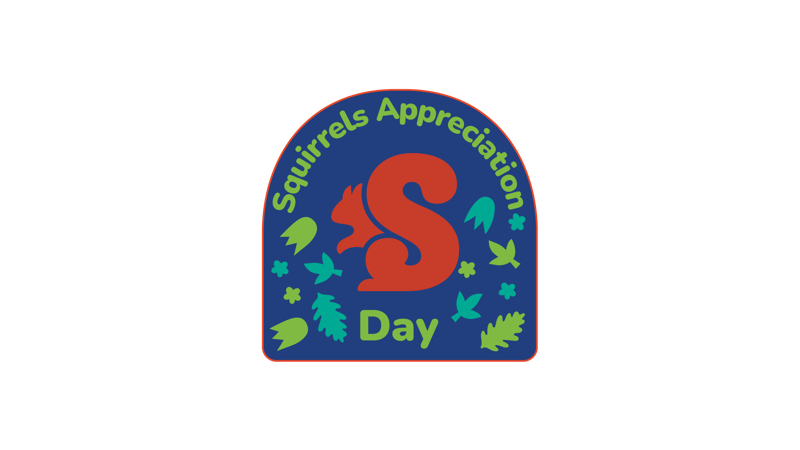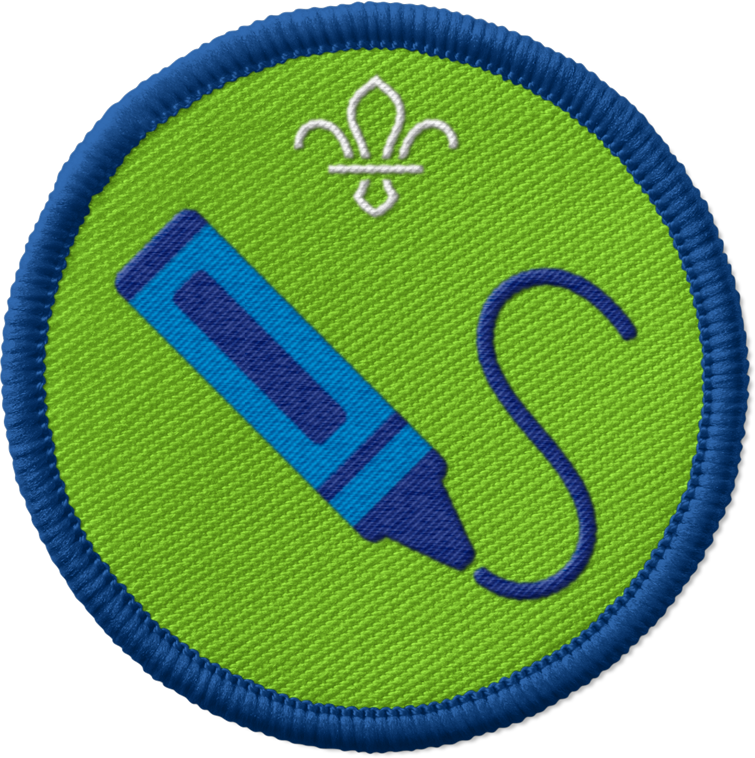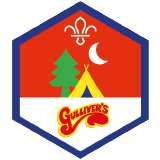
Lovely squirrel leafy craft
You’ll need
- Glue sticks
- Scissors
- Natural materials, such as leaves, twigs and feathers
- A4 card
- Squirrel template
Before you begin
- Use the safety checklist to help you plan and risk assess your activity. Additional help to carry out your risk assessment, including examples can be found here. Don’t forget to make sure all young people and adults involved in the activity know how to take part safely.
- Make sure you’ll have enough adult helpers. You may need some parents and carers to help if you’re short on helpers.
- You could do this activity for Squirrel Appreciation Day on 21 January and get your paws on a fun badge from Scout Store.
Setting up for this activity
- Before the meeting, make sure you’ve collected enough dry materials to use in this activity. Everyone will need enough materials to fill the squirrel template.
- You could collect these before the meeting, or you could ask everyone to collect leaves and bring them to the meeting.
- Remind everyone to only collect fallen leaves, don’t pick leaves off living plants.
- You could also use leaves found in craft stores, too.
- Print out the squirrels templates, making sure there’s for everyone to have their own.
Foraging through the finds and story time
- Explain to everyone that they’re going to use natural materials to create a squirrel picture. Talk about how squirrels love to explore and sleep in a nest of twigs, leaves and moss. These materials help to make sure the nest’s nice and warm during the cold autumn days
- Have a chat about the natural materials you’ve collected for this activity, such as the leaves. Where did they come from? How do the leaves change throughout the year? What do they look like in Summer compared to Winter? How are all the leaves different? Does anyone know what types of leaves you may have collected and what type of tree they’re from? What else has been collected – can anyone identify the other objects?
- Read a story with everyone. You could read “The Leaf Thief” by Alice Hemming, or a similar story about nature and/or the outdoors. Borrow this book.
Making a leafy squirrel
- Ask everyone to carefully cut out the squirrel template with the scissors. They need to try to stay as close to the lines as possible. Make sure you have enough adults around to supervise this and help anyone who needs it.
- Ask everyone to cover the template in a thin layer of glue, then stick the natural materials onto the glue to create their squirrel.
- Can anyone use their items creatively to create different elements of a squirrel, such as the eyes or ears? For example, you could layer up lots of leaves for a busy tail.
- Once finished, put the completed pictures to one side and wait for the glue to dry.
Reflection
This activity gave everyone the opportunity to value the outdoors and take independent decisions on how to decorate their squirrels. What natural materials did you use for your picture? Did you use different materials for different parts of the squirrel? Was the picture easy to make? Would you do anything different next time?
Safety
All activities must be safely managed. You must complete a thorough risk assessment and take appropriate steps to reduce risk. Use the safety checklist to help you plan and risk assess your activity. Always get approval for the activity, and have suitable supervision and an InTouch process.
- Glue and solvents
Always supervise young people appropriately when they’re using glue and solvent products. Make sure there’s plenty of ventilation. Be aware of any medical conditions that could be affected by glue or solvent use and make adjustments as needed.
- Scissors
Supervise young people appropriately when they’re using scissors. Store all sharp objects securely, out of the reach of young people.
- Visits away from your meeting place
Complete a thorough risk assessment and include hazards, such as roads, woodland, plants, animals, and bodies of water (for example, rivers, ponds, lakes, and seas). You’ll probably need more adult helpers than usual. Your risk assessment should include how many adults you need. The young people to adult ratios are a minimum requirement. When you do your risk assessment, you might decide that you need more adults than the ratio specifies. Think about extra equipment that you may need to take with you, such as high visibility clothing, a first aid kit, water, and waterproofs. Throughout the activity, watch out for changes in the weather and do regular headcounts.
To make this activity longer, or stretch over two sessions, instead of the materials being collected in advance, why not go for a walk around your local area as a group and collect the materials on the way?
You could consider cutting the squirrel templates out before the activity or, alternatively, you may decide not to cut out the squirrels at all and use the full piece of paper for the craft.
If anyone doesn’t feel comfortable working with the glue or natural materials, let them work in a pair with someone else, so they can help each other.
All Scout activities should be inclusive and accessible.
Now you have made a squirrel, why not have a go at making other woodland animals, such as hedgehogs, foxes or birds? You could also make a larger picture as a group, using the same techniques, and each person could create a different creature then add them all to one bigger background.
This activity encourages young people to make their own decisions on how they want to decorate their picture.

